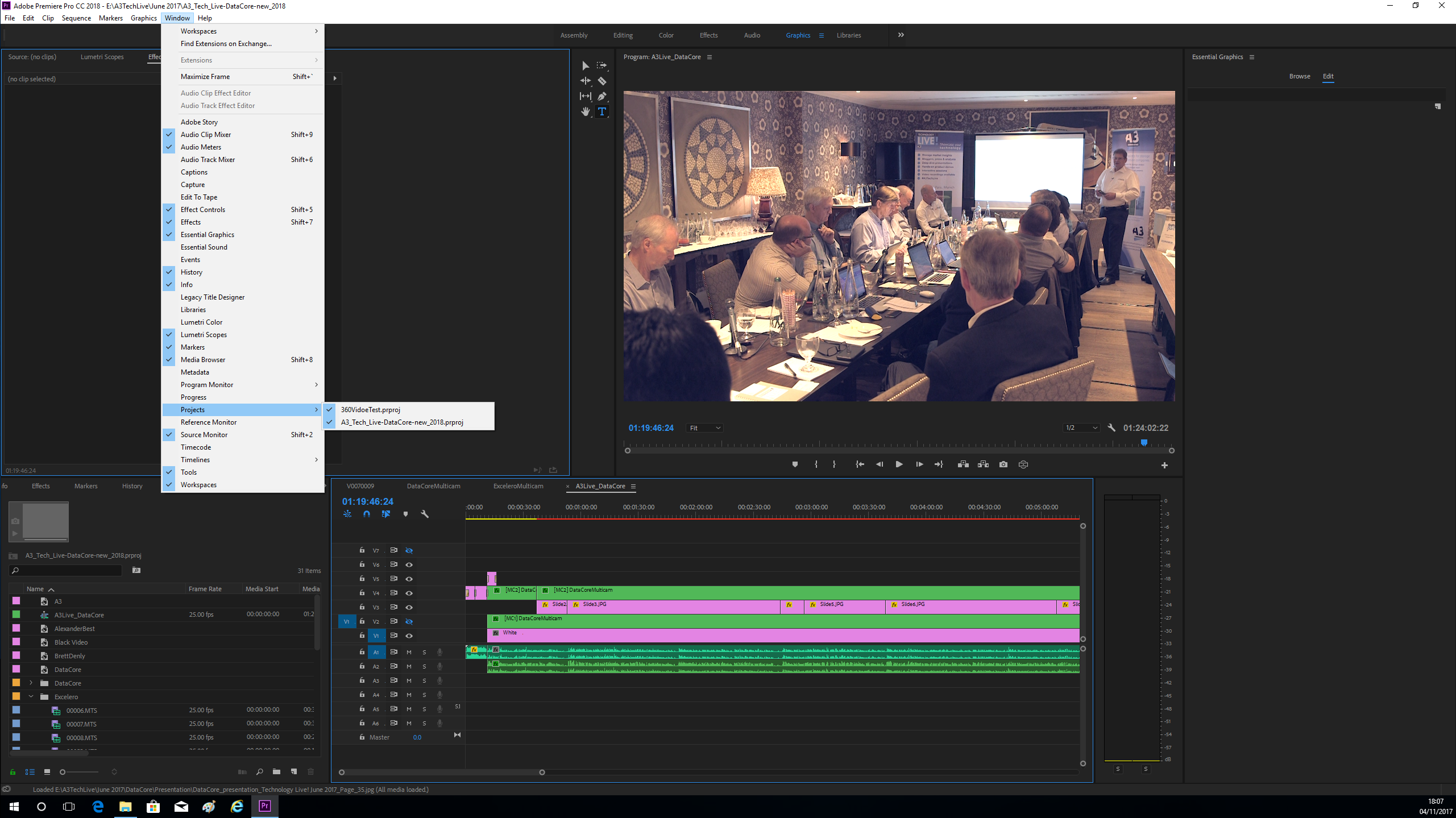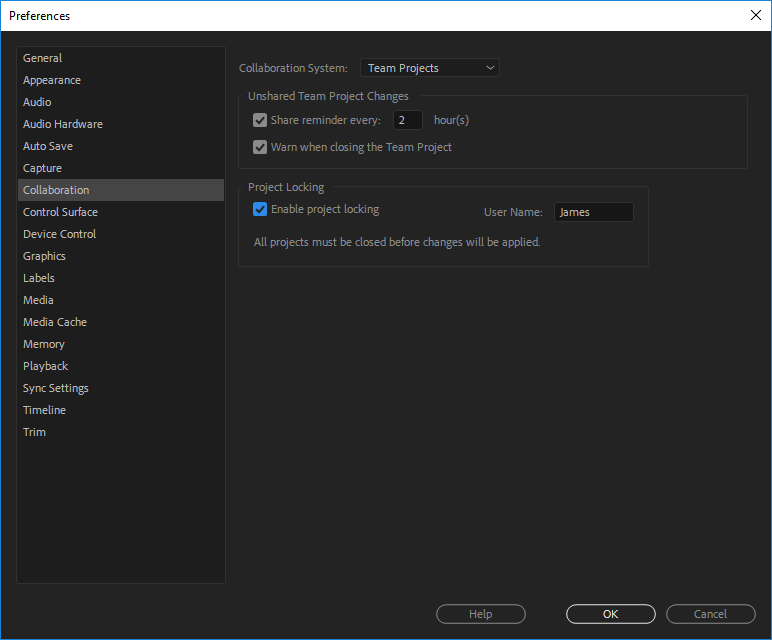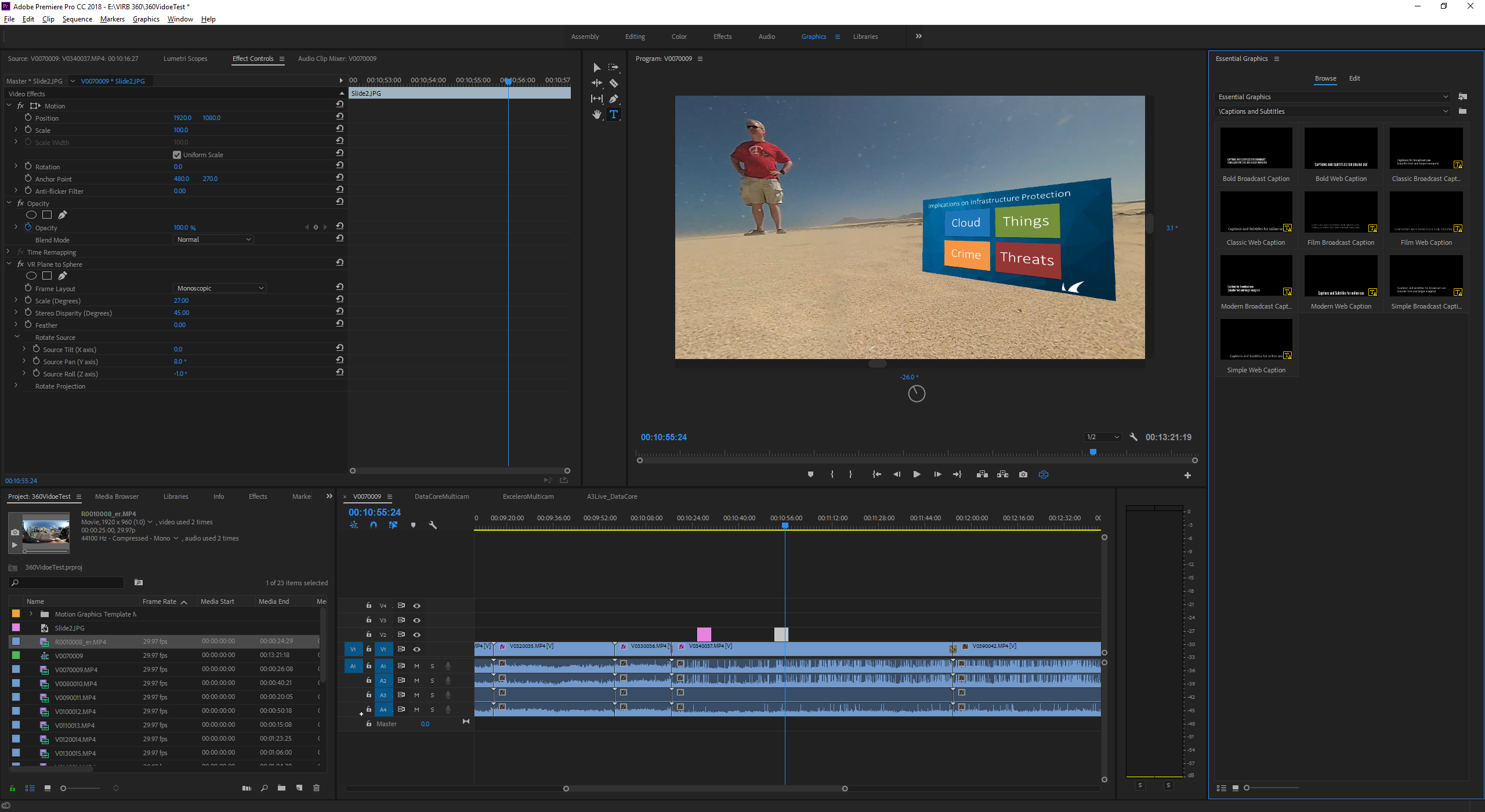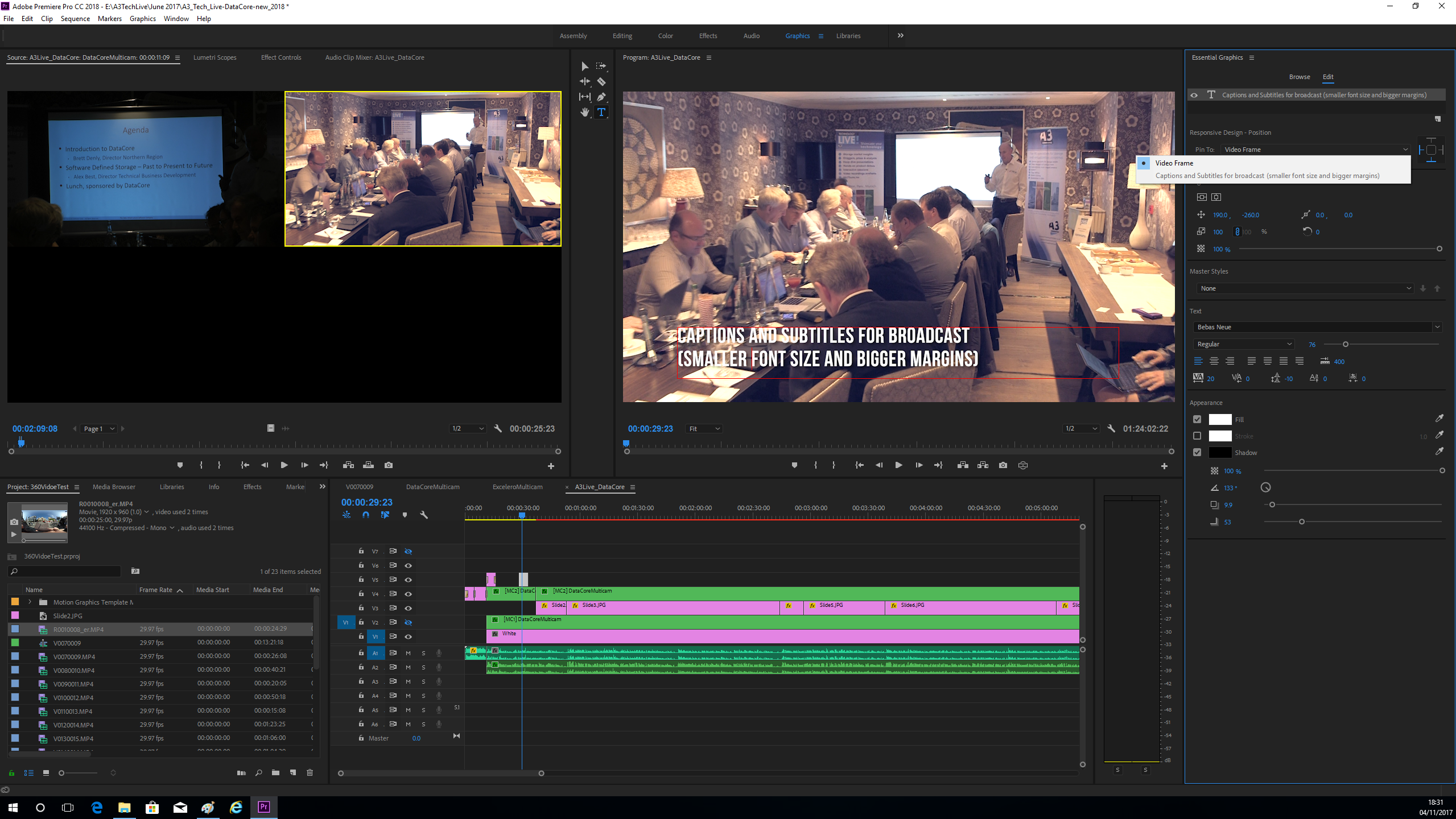Adobe Premiere Pro CC 2018 review: A major update
Not just usability improvements but a useful selection of VR effects and transitions too


The ability to load multiple projects, shared project controls and extended VR support are killer new features. Premiere Pro CC 2018 is even easier to use than ever, and now also a serious contender for creating 360 content.
-
+
Loads of new VR effects; Multi-project support; New collaboration tools
-
-
No 360-degree stitching tools

Aside from the monthly sucking of funds from your account, there's one problem with subscription-only software such as Adobe Premiere Pro CC: it's easy to miss when a significant new version arrives.
Don't make that mistake with this latest incarnation, because it's a belter: along with some long-needed usability and collaboration improvements, there's also much better support for 360-degree video content.
Adobe Premiere Pro CC 2018 review: Usability updates
Let's start with the usability and collaboration improvements. It seems like a bizarre feature not to have had over Adobe Premiere Pro's 25 years of history, but at long last you can now open more than one project simultaneously. Before, if you wanted to reuse assets created in one project within a new one, you would need to import the old project. This could get very messy.
Now you can just open both projects, then copy and paste between them. You can grab elements from the timeline of one sequence, and when you paste them into a sequence in another project, their related file references come with them. This is a much more convenient way of working.

Vaguely related is the new Shared Projects facility. Premiere Pro CC has had a team project capability via Creative Cloud storage for a while, but Shared Projects are aimed at collaboration using communal storage on a local network. A user can now lock a project that has been loaded from a central storage repository, say a NAS or SAN, so that other workstations can only open it in read-only mode.
Once Project Locking has been enabled in the Premiere Pro Preferences, you give your workstation a User Name in the same dialog. Then you create Shared Projects, and can use a little padlock icon in the bottom left-hand corner to toggle read-write mode or release a project for others to work on.
Adobe Premiere Pro CC 2018 review: VR editing
The other significant area of improvement is for creating 360-degree VR content, which Adobe is labelling Immersive Video. Premiere Pro CC had received some support for 360 content with version 2015.3 in the middle of 2016. But for CC 2018 this has been beefed up considerably, with a selection of 360-aware effects and transitions that derive from Adobe's acquisition of the Mettle SkyBox Suite (sadly Adobe hasn't included the latter's 360 stitching tools into Premiere Pro).
Although you could apply 2D effects already, these introduce unwanted artefacts along stitching lines. But the new effects are seamless, and include Blur, Chromatic Aberrations, Color Gradients, De-Noise, Digital Glitch, Fractal Noise, Glow, Plane to Sphere, Projection, Rotate Sphere and Sharpen.
The Plane to Sphere effect is particularly useful; without this, when you import a 2D image it will automatically look curved. Apply the VR Plane to Sphere, and the image will instead appear like a 2D placard within 360-degree space, with tools to adjust how far away it looks and orientation. Even better, all these effects are GPU-accelerated, so they gain a performance advantage from your graphics hardware.

The VR Rotate Sphere effect lets you correct orientation issues with your 3D sphere, and you can add keyframes to animate the default view direction within the 360-degree space. The VR Projection tool is also handy, because it makes it easy to use footage shot on different 360 cameras on the same timeline. For example, we imported footage shot on a Ricoh Theta S alongside Garmin VIRB 360 output, and the VR Projection filter stretched the Ricoh footage perfectly to match the Garmin's.
The remaining effects are essentially 360-aware versions of their 2D counterparts. The immersive transitions include Chroma Leaks, Gradient Wipe, Iris Wipe, Light Leaks, Light Rays, Mobius Zoom, Random Blocks and Spherical Blur.
All eight use the 360-degree space in an interesting way to move between clips, and are a welcome addition because most 2D transitions introduce unwanted visual artefacts. Premiere Pro itself also now works in VR, so you can edit while wearing a VR viewing device such as the Oculus Rift or HTC Vive.
Adobe Premiere Pro CC 2018 review: Extra features
There are a couple of other significant new features. The Essential Graphics Panel, introduced with Premiere Pro CC 2017 to replace the legacy titler, has been improved by the addition of Responsive Design. The Time element lets you pin a range of intro and outro keyframes at the beginning and end of a motion graphics clip, which are preserved when you make ripple edits.

This also includes a rolling credits feature. The Position element lets you pin a graphics layer to another layer or the video frame itself. The graphics layer will then respond to changes to the pinned layer or video frame, so when these are added to a sequence with a different aspect ratio they will maintain relative position.
Adobe Premiere Pro CC 2018 review: Verdict
There are sundry smaller improvements, including the ability to preview fonts and edit motion graphics templates created in After Effects directly within Premiere Pro. There are now also eight new label colours to aid clip organisation. But the ability to load multiple projects, shared project controls and extended VR support are the killer new features. Premiere Pro CC 2018 is even easier to use than ever, and now also a serious contender for creating 360 content.
Verdict
The ability to load multiple projects, shared project controls and extended VR support are killer new features. Premiere Pro CC 2018 is even easier to use than ever, and now also a serious contender for creating 360 content.
Get the ITPro daily newsletter
Sign up today and you will receive a free copy of our Future Focus 2025 report - the leading guidance on AI, cybersecurity and other IT challenges as per 700+ senior executives
Dr James Morris has worked as a technology journalist for over 25 years, including spending nine years on the staff of market-leading computer magazine PC Pro, the last five of which were as the publication’s editor. He specialises in enterprise-grade software and hardware, with a particular focus on content creation. He launched a pioneering video channel for HEXUS.net in 2006 and ran the video reviews channel for TrustedReviews.com for four years. He also runs a successful online digital content and commercial video production company, t-zero communications Ltd.
Dr Morris is a prolific technology writer and contributes commercial content for major IT brands including AMD, BlackBerry, Dell, Cognizant, HP, and IBM. He published a book on artificial intelligence, Can Computers Create Art? in 2009. He is also an academic, and is currently Pathway Director of the MA, Interactive Journalism at City, University of London.
Previously, he was course leader for the BA in Web Media Production at Ravensbourne University. He has a PhD in Philosophy, Art and Social Thought from the European Graduate School in Switzerland, a Master's in Media Arts from the New School in New York, USA, and a Bachelor's in Social Anthropology from the London School of Economics.
Dr. Morris can be found on Twitter at @Cyberwest, or emailed at j@tzero.co.uk
-
 Westcon-Comstor and Vectra AI launch brace of new channel initiatives
Westcon-Comstor and Vectra AI launch brace of new channel initiativesNews Westcon-Comstor and Vectra AI have announced the launch of two new channel growth initiatives focused on the managed security service provider (MSSP) space and AWS Marketplace.
By Daniel Todd Published
-
 Third time lucky? Microsoft finally begins roll-out of controversial Recall feature
Third time lucky? Microsoft finally begins roll-out of controversial Recall featureNews The Windows Recall feature has been plagued by setbacks and backlash from security professionals
By Emma Woollacott Published
-
 The UK government wants quantum technology out of the lab and in the hands of enterprises
The UK government wants quantum technology out of the lab and in the hands of enterprisesNews The UK government has unveiled plans to invest £121 million in quantum computing projects in an effort to drive real-world applications and adoption rates.
By Emma Woollacott Published